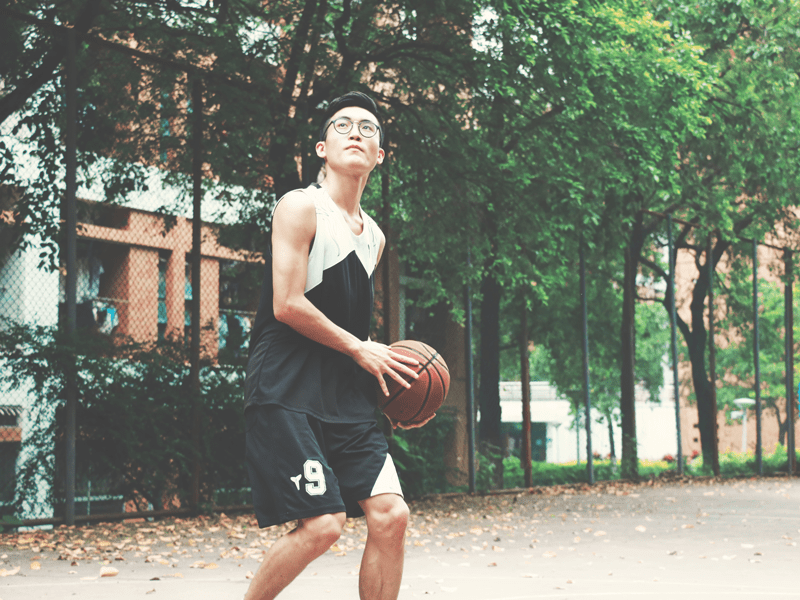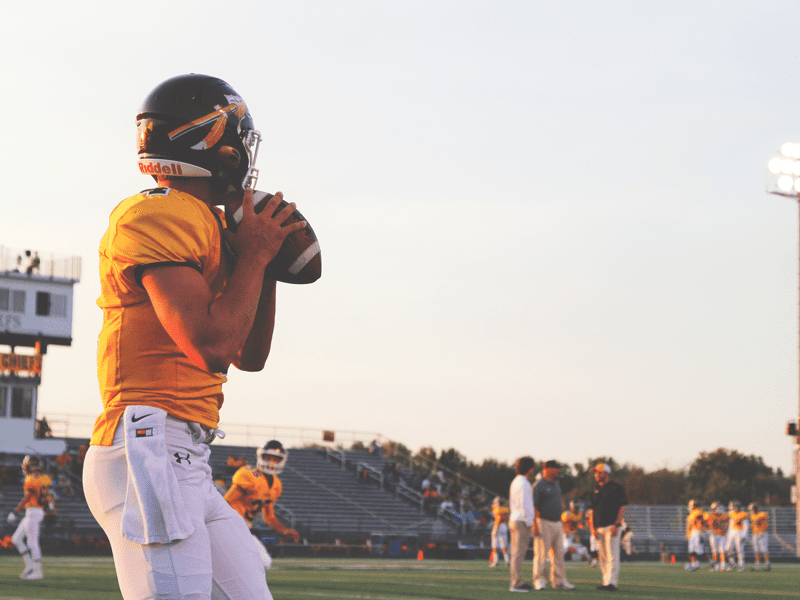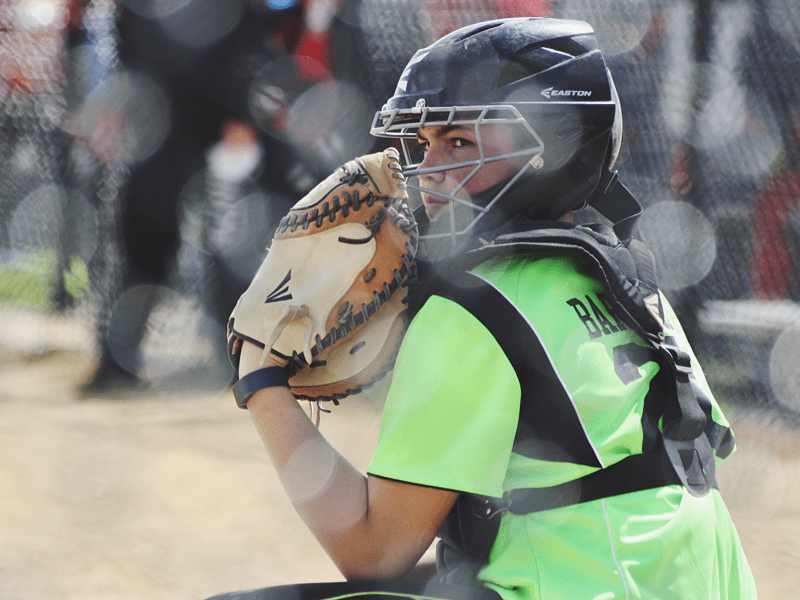Millions of youth devote a substantial amount of their childhood to sports. Undoubtedly, spending this much time in any activity will impact their lives. The common adage “sports produces character” captures the prominent reason children, teenagers, and young adults are encouraged to participate in sports: an assumption that the lessons learned in sports will equate to success in life. However, research on the impact of sports participation is mixed, with some showing negative effects on youth development. Although sports can shape the lives of teenagers in powerful ways, these findings challenge the notion that sports automatically lead to positive youth outcomes, particularly a healthy identity and emotional development. Given that youth are spending so much time in sports and parents are spending so much effort and money to have their kids in sports, why not have young people’s experiences in sports be as formative as possible?
This article discusses important developmental processes during adolescence that are relevant to sports and highlights some research-informed approaches to help parents and caring adults engage with youth playing sports.

Adolescence: a season of identity formation
The profound physical, cognitive, and social changes associated with adolescence create an active time for identity formation when adolescents are seeking a more coherent understanding of self.1 Adolescents also experience emotions more strongly and have greater difficulty regulating these emotions due, in part, to changes in the brain during this developmental period.2 They also make advances in abstract thinking that allow them to become aware of their own thought processes (i.e., metacognition). The positive side of this advancement is the increased ability to think about the world in more complex ways and integrate meaningful narratives into their self-identity.
However, this newfound ability can also enhance self-focus, as adolescents tend to create ideals and make social comparisons to see how they measure up against others. They can observe directly—and also indirectly, through social media—the “perfect world” of other teenagers. This comparison is no longer restricted by geography but extends to an endless possibility of virtual comparisons across the world. Identity formation and the ability to manage emotional responses not only are internal processes, but also are embedded in social relationships. Children and adolescents are continuously being formed by their interactions within their developmental context.
The positive and negative impact of youth sports on identity formation
So how do these changes relate to sport? Sports provide a powerful network of relationships and opportunities for promoting positive identity formation and strengthening emotion-regulation skills. Unfortunately, most adults in the world of sports have also witnessed the devastation that can occur when youth sport focuses on “winning at all costs.” One consequence of this approach is that young people begin to derive their value as human beings from their athletic performance. A young athlete quickly recognizes that affirmation comes along with winning. The media actively reinforces the message that self-worth is based in performance, and adolescents are especially vulnerable to the allure of self-importance that can accompany winning. It is the natural trajectory of a gifted adolescent to form a central part of their identity around being an athlete and, more specifically, how they perform in their sport. Coupled with the heightened sensitivity and difficulty regulating emotionality, this can lead to a performance-based identity that can undermine the emotional health of youth and ultimately prevent young athletes from performing at their best. Even more, a performance-based identity is often celebrated in our culture and reinforced by adults within the young athlete’s developmental context.

In a recent Sports Illustrated article, the most decorated Olympian of all time, Michael Phelps, reflected on his time in a rehabilitation center as a result of a DUI. Phelps summed up sports’ tendency towards performance-based identity: “I wound up uncovering a lot of things about myself. For a long time I saw myself as the athlete that I was, but not as a human being.”3 This young man has lived out the athlete’s fantasy: standing on the Olympic medal platform an astounding 28 times—23 of those for a gold medal! However, his self-worth based in athletic performance did not provide fulfillment or connect him to something stable. Any high achiever with a performance-based identity risks feeling devastated when they fall short of their goals; or having actually realized their dream, finding it empty. This does not minimize the value for young people in striving for excellence, but it does challenge caring adults in highly competitive contexts to invest in youth identity formation beyond just performance. This is especially important during adolescence because coherent self-narratives are being constructed based on interactions with the environment.
Adults drive performance-based identity home
Andre Agassi, the great tennis player, reflects on his first loss at the young age of seven years old: “After years of hearing my father rant at my flaws, one loss has caused me to take up his rant. I have internalized my father—his impatience, his perfectionism, his rage—until his voice doesn’t just feel like my own, it is my own. I no longer need my father to torture me. From this day on, I can do it by myself.”4 Agassi puts words to what is often an unconscious process for high achievers who internalize the voice of an adult that leaves them seeking a sense of worthiness in some future result.
10 WARNING SIGNS OF PERFORMANCE-BASED IDENTITY
 • Sports are not fun anymore.
• Sports are not fun anymore.
• Fear of failure is stronger than the excitement to compete.
• Anxiety increases before competition (including sleep disruption).
• Bouncing back from a disappointing performance is difficult.
• The teenager desires to quit or finds excuses not to compete.
• Self-descriptions only relate to being an athlete.
• The teenager has feelings of worthlessness when not performing well.
• The teenager ruminates on mistakes made in competition.
• Jealousy or anger is demonstrated towards others performing better.
• An obsession develops with working harder or practicing more.
Though it may sound extreme, Agassi’s description of his interaction with his father is more common than people would like to admit. Furthermore, even subtler reactions to teenage athletes can also result in negative impact. Consider, for example, a parent’s immediate response to a disappointing performance as a child walks off the soccer field or a youth worker’s seemingly harmless announcement of a track star’s winning performance when other members of the group were also in the race. Although one event or experience is not likely to lead to a performance-based identity, repeated interactions across time promote a mindset that links love and acceptance to performance. It is not that competition is bad or evaluation of performance should be avoided (e.g., participation ribbons for all competitors). In fact, athletic competition provides a context for youth to learn the important skill of dealing with failure that strengthens resilience. The problem arises from youth viewing the result of the competition as the purpose of their existence and the main avenue to earn love. Adolescents with a performance-based identity lose the joy that attracted them to sports and replace it with a fear of disappointing others and need to protect their self-worth.
Research suggests incongruence between the reports of parents and adolescents regarding support and pressure to perform. Adolescents, especially boys, report feeling much higher levels of pressure from parents than parents are aware of.5 Moreover, parents often underestimate the emotional experience of losing for adolescents, while adolescents overestimate the level of disappointment from a parent.6 This discrepancy highlights the developmental changes discussed, particularly a heightened sensitivity to perceived social rejection and emotional situations. It points to the importance of intentional communication about performance and identity. Parents or caring adults may feel they are being supportive; the adolescent, however, may be experiencing and responding to a different perception (see “10 Warning Signs,” below).

How adults can help teen athletes move from performance to purpose
To counter a performance-based identity, adolescents need continual reminders of their human value rooted in unconditional love and connected to their unique purpose. Parents and caring adults of faith have the opportunity to point young athletes to God’s unconditional love that is not based on human performance but is a result of being God’s creation. Youth thrive in emotional climates where they feel loved and accepted while receiving clearly communicated expectations. A sense of identity grounded in feeling loved and based in purpose (i.e., a purpose-based identity) empowers youth to act on their gifts in healthy ways. Purpose is something meaningful to the person that is a central, self-organizing life aim leading to a positive contribution to society.7 Adolescents’ search to belong and feel accepted provides a tremendous window of opportunity for connecting young people to purpose. Perpetual reinforcement of purpose creates a transcendent self-narrative that moves adolescents to a broader view of self and to gain a sense of connection to something greater.8 For the young athlete with a purpose-based identity, competition is not a determiner of self-worth but an opportunity for growth and something to be enjoyed. Further, sports are seen as meaningful not just because of the joy experienced but also because of the productive engagement with others. As a result, the young athlete is able to experience the freedom to strive for excellence and maximize their potential on and off the athletic field.
Certainly Christian teachings provide a powerful framing for young people to understand self-worth rooted in God’s unconditional love and purpose. However, the integration of one’s faith in the context of sport can be difficult under conditions of a performance-based identity. Young athletes can perceive that their value to God requires success in sports in order to have a pedestal for evangelism or to “bring glory to God’s name.” This also has negative ramifications as the fear of disappointing others is extended to God. An alternative is to view participation in sports as a gift from God that reflects God’s unchanging love for the athlete and provides a source of joy and an opportunity to serve others.9 Thus, sports are another way to experience God’s love and pleasure and connect to something greater than self.
So are sports healthy for youth? It depends on their relationships with caring adults. But the good news is that it’s possible to help teen athletes move from performance to purpose.

ENDNOTES
1. L. Steinberg and A. Morris, “Adolescent Development,” Annual Review of Psychology 52 (2001): 83–110.
2. T. A. Hare, N. Tottenham, A. Galvan, H. U. Voss, G. H. Glover, and B. J. Casey, “Biological Substrates of Emotional Reactivity and Regulation in Adolescence during an Emotional Go-NoGo Task,” Biological Psychiatry 63 (2008): 927–34.
3. T. Layden, “After Rehabilitation, the Best of Michael Phelps May Lie Ahead,” Sports Illustrated, November 16, 2015, https://www.si.com/ olympics/2015/11/09/michael-phelps-rehabilitation-rio-2016.
4. Andre Agassi, Open: An Autobiography (New York: Alfred A. Knopf, 2009), 38.
5. M. A. Kanters, J. Bocarro, and J. Casper, “Supported or Pressured? An Examination of Agreement among Parents and Children on Parent’s Role in Youth Sports,” Journal of Sport Behavior 31 (2008): 64–80.
6. C. DeFrancesco and P. Johnson, “Athlete and Parent Perceptions in Junior Tennis,” Journal of Sport Behavior 20 (1997): 29–36.
7. P. E. McKnight and T. B. Kashdan, “Purpose in Life as a System that Creates and Sustains Health and Well-being: An Integrative, Testable Theory,” Review of General Psychology 13, no. 3 (2009): 242–51.
8. W. Damon, The Path to Purpose: How Young People Find Their Calling in Life (New York: Free Press, 2009).
9. A. Null, “Finding the Right Place: Professional Sport as a Christian Vocation,” in The Image of God in the Human Body: Essays on Christianity and Sports, ed. D. Deardoff II and J. White (Lampeter, Wales: Edwin Mellen Press, 2008), 315–66.
10. Ibid.
Republished with permission from FULLER studio. Original article here.













